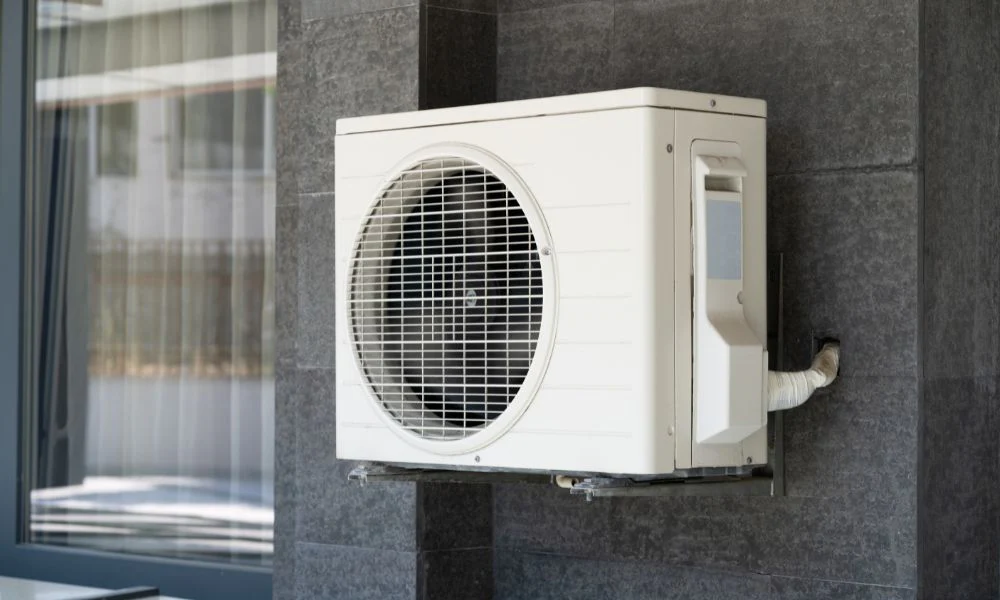DIY Mini Split: A Comprehensive Guide to Installation and Benefits?

If you’re looking for an efficient way to cool or heat your home without the hassle and cost of a central air system, a DIY mini split system could be the solution. Mini split systems, also known as ductless heat pumps, have grown in popularity due to their energy efficiency and flexibility. Whether you want to add cooling to a single room or heat your entire home, a DIY mini split installation can be a rewarding project that saves you money on labor costs. This article will delve into everything you need to know about DIY mini splits, from choosing the right system to installation steps and troubleshooting tips.
What is a DIY Mini Split?
A DIY mini split is a type of air conditioning and heating system that doesn’t require ductwork to deliver air to the desired space. Instead, it uses an indoor unit (evaporator) and an outdoor unit (condenser) connected by a refrigerant line. Unlike traditional central AC systems, mini splits allow for zoned cooling and heating, meaning each room or area can have its own thermostat and temperature control. DIY mini split systems are designed for homeowners who prefer to install their systems themselves, avoiding the need for professional HVAC services.
Benefits of Installing a DIY Mini Split
- Energy Efficiency: Mini splits are highly energy-efficient, using variable speed compressors that adjust to the exact cooling or heating requirements of each zone, reducing wasted energy.
- Cost Savings: With a DIY installation, you can save on labor costs, which typically make up a large portion of the overall expense. Plus, mini splits are generally cheaper to operate than central HVAC systems.
- Zoned Comfort: The ability to control the temperature in individual rooms gives you precise control over comfort and energy use.
- Quiet Operation: Mini split systems are quieter than traditional air conditioners and heaters, as the noisy compressor is located outdoors.
- Flexibility: A DIY mini split installation can be used in a variety of settings, from homes to offices, garages, or even sheds and workshops.
How to Choose the Right DIY Mini Split System
Before you start your installation, it’s essential to select the right DIY mini split system. Consider these factors:
1. Cooling and Heating Capacity
Each mini split has a specific cooling and heating capacity, measured in BTUs (British Thermal Units). A system that is too small will not cool or heat your space adequately, while an oversized system will cycle on and off frequently, reducing efficiency. To calculate the required BTUs, consider the square footage of the room(s) you want to condition, as well as factors such as ceiling height, insulation, and sun exposure.
2. Single Zone vs. Multi-Zone
A single-zone mini split system has one indoor unit, ideal for cooling or heating a single room. A multi-zone system, on the other hand, can accommodate several indoor units connected to one outdoor unit, making it a great option for larger homes or buildings.
3. Efficiency Ratings
Look for a system with a high SEER (Seasonal Energy Efficiency Ratio) rating. The higher the SEER, the more energy-efficient the system will be, which translates to lower utility bills.
4. Brand and Warranty
Choose a reputable brand with good reviews and a solid warranty. Some well-known brands in the mini split market include Mitsubishi, Daikin, LG, and Gree.
Steps to Install a DIY Mini Split
While installing a DIY mini split is more straightforward than installing a traditional HVAC system, it still requires attention to detail and proper preparation. Follow these general steps:
1. Prepare Your Space
Before installation, decide on the location for both the indoor and outdoor units. The indoor unit should be placed on an exterior wall with enough space for proper airflow. The outdoor unit needs to be located on a solid, level surface and at least 3 feet away from any obstacles.
2. Install the Indoor Unit
- Mark the wall where you want to mount the indoor unit.
- Drill a hole in the wall for the refrigerant lines, drain line, and power cable.
- Mount the bracket for the indoor unit securely to the wall.
- Attach the indoor unit to the bracket and connect the refrigerant lines, drain line, and power cable.
3. Install the Outdoor Unit
- Position the outdoor unit on a level surface, like a concrete pad or wall mount.
- Ensure there’s enough clearance around the unit for air circulation.
- Secure the outdoor unit with bolts and brackets if necessary.
4. Connect the Refrigerant Lines
- Using the provided tubing, connect the refrigerant lines between the indoor and outdoor units.
- Make sure the lines are tightly sealed and free from leaks. You may need to use a vacuum pump to evacuate any air from the lines.
5. Electrical Wiring
- Run the electrical cables between the indoor unit, outdoor unit, and the power source.
- Connect the units to a dedicated circuit and ensure proper wiring to prevent electrical hazards.
6. Test the System
- Once everything is connected, turn on the system and check for leaks, strange noises, or irregular operation.
- Run the system through both cooling and heating modes to ensure it operates as expected.
DIY Mini Split Maintenance Tips
Proper maintenance is crucial for ensuring your DIY mini split system runs efficiently over its lifespan. Here are some maintenance tips:
- Clean the Filters: Regularly clean or replace the air filters to maintain airflow and improve efficiency.
- Inspect the Refrigerant Lines: Check for any signs of wear, damage, or leaks. If you suspect a refrigerant leak, call a professional to repair it.
- Keep the Outdoor Unit Clean: Clear any debris, leaves, or dirt around the outdoor unit to prevent blockages that could affect performance.
- Schedule Annual Inspections: Even with a DIY installation, consider having the system professionally inspected once a year to ensure everything is functioning properly.
Troubleshooting Common Issues with DIY Mini Splits
While mini splits are generally reliable, you may encounter issues over time. Here are some common problems and potential solutions:
1. System Not Cooling or Heating Properly
- Check the Thermostat: Ensure it is set correctly and functioning.
- Clean the Filters: Dirty filters can impede airflow, reducing efficiency.
- Check Refrigerant Levels: Low refrigerant could indicate a leak or insufficient charge.
2. Water Leaks
- Check the Drain Line: A clogged or disconnected drain line can cause water to leak from the indoor unit.
- Inspect for Ice Buildup: Ice can form on the coils if airflow is restricted, causing water to drip when it melts.
3. Strange Noises
- Check for Obstructions: Ensure nothing is blocking the air intake or exhaust.
- Tighten Loose Components: Loose screws or parts inside the unit can cause rattling noises.
Conclusion: Is a DIY Mini Split Right for You?
A DIY mini split system offers a convenient, cost-effective way to add cooling and heating to your home or office. If you’re comfortable with basic electrical work and HVAC systems, installing a DIY mini split can be a highly rewarding project. It offers energy efficiency, flexibility, and zoned comfort at a fraction of the cost of a traditional system. With proper installation and maintenance, a DIY mini-split can provide reliable, efficient climate control for years to come.
Before you begin, make sure you research the best system for your needs and are prepared for the installation process. If in doubt, consider consulting a professional to ensure the system is installed safely and efficiently.



